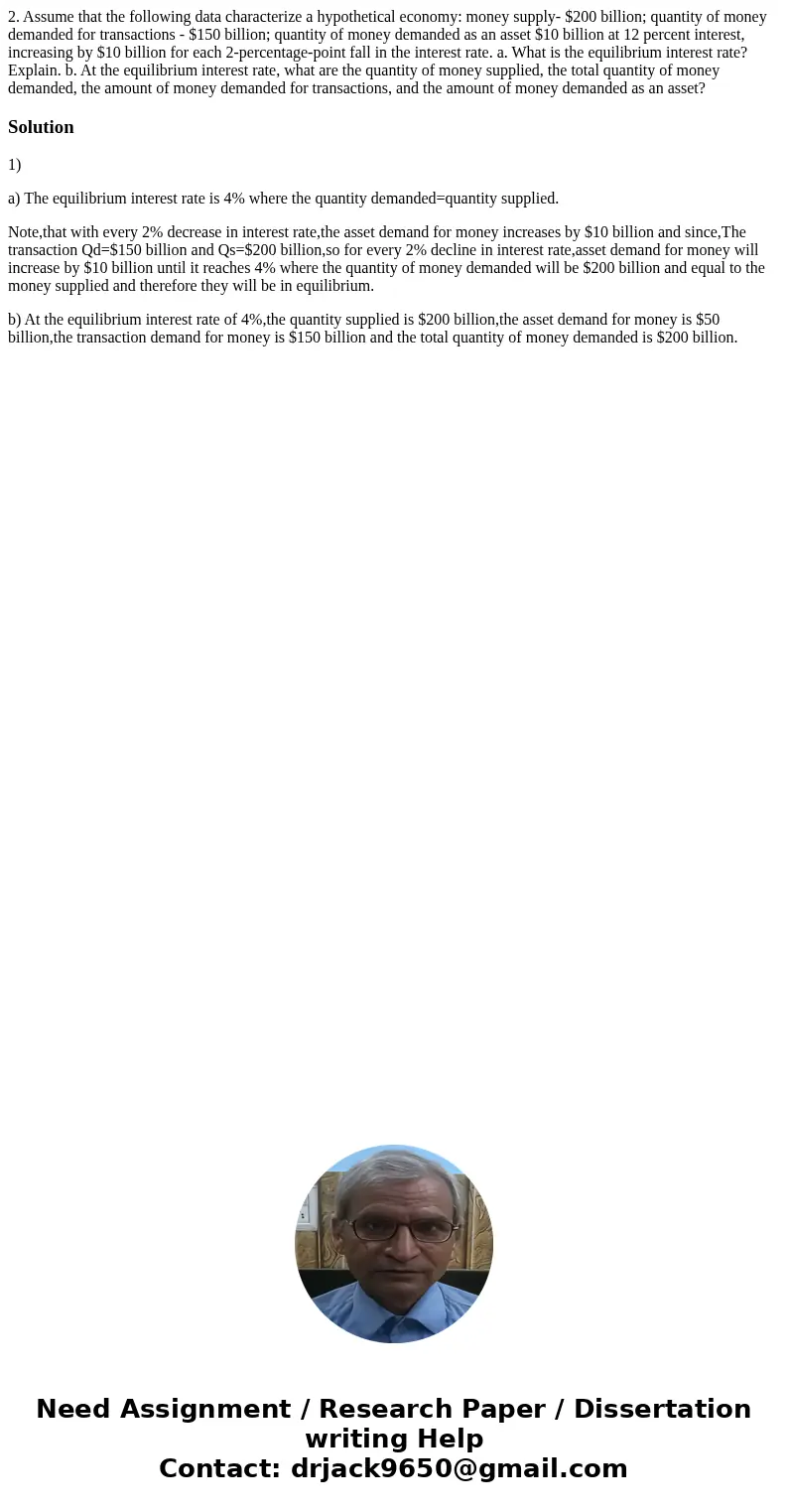2 Assume that the following data characterize a hypothetical
2. Assume that the following data characterize a hypothetical economy: money supply- $200 billion; quantity of money demanded for transactions - $150 billion; quantity of money demanded as an asset $10 billion at 12 percent interest, increasing by $10 billion for each 2-percentage-point fall in the interest rate. a. What is the equilibrium interest rate? Explain. b. At the equilibrium interest rate, what are the quantity of money supplied, the total quantity of money demanded, the amount of money demanded for transactions, and the amount of money demanded as an asset? 
Solution
1)
a) The equilibrium interest rate is 4% where the quantity demanded=quantity supplied.
Note,that with every 2% decrease in interest rate,the asset demand for money increases by $10 billion and since,The transaction Qd=$150 billion and Qs=$200 billion,so for every 2% decline in interest rate,asset demand for money will increase by $10 billion until it reaches 4% where the quantity of money demanded will be $200 billion and equal to the money supplied and therefore they will be in equilibrium.
b) At the equilibrium interest rate of 4%,the quantity supplied is $200 billion,the asset demand for money is $50 billion,the transaction demand for money is $150 billion and the total quantity of money demanded is $200 billion.

 Homework Sourse
Homework Sourse